Uighur Culture
Uighur People
The Uighurs are a Muslim ethnic minority group primarily located in the Xinjiang Uighur Autonomous Region in China. Urumqi and Kashgar are well known Uighur & and Silk Road cities. There is also a significant population of Uighurs in neighboring Central Asian countries in Kazakhstan, Kyrgyzstan, and Uzbekistan.
The Uighurs have a distinct language and culture that has been shaped by centuries of interactions with various Central Asian and Chinese civilizations. Historically, they were part of the larger Turkic peoples and were closely linked to the Silk Road trade routes that connected China and Central Asia.
Uighur Culture
Uighur culture shares many similarities with other Central Asian Turkic cultures due to shared linguistic, historical, and religious roots but it also has distinct characteristics shaped by geography, history, and interactions with neighboring civilizations. Many of the typical Central Asian foods are originally Uighur.
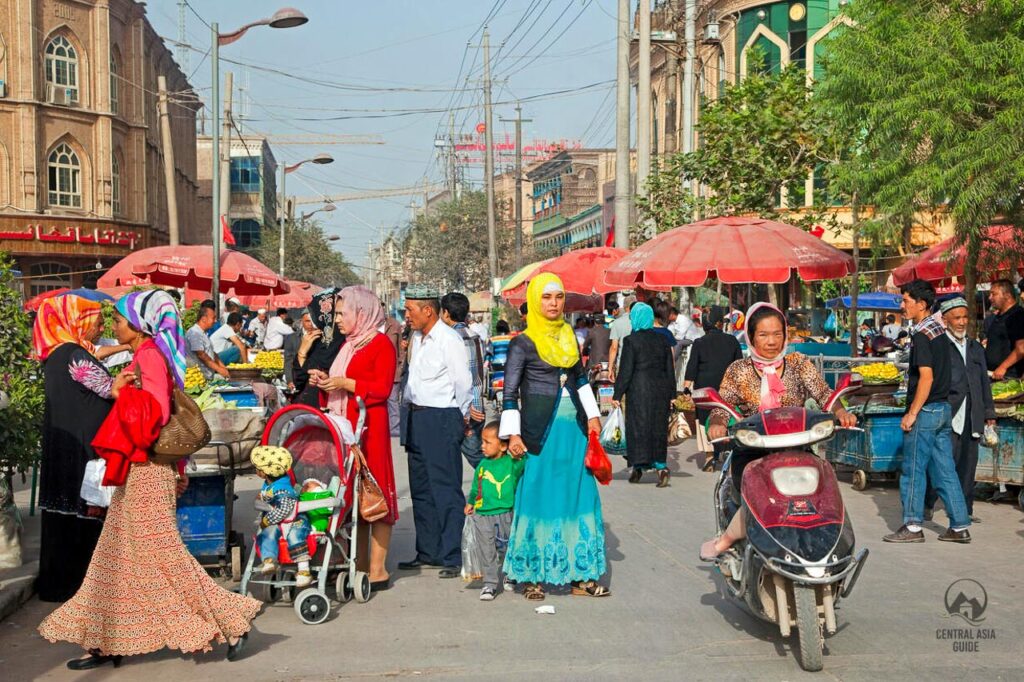
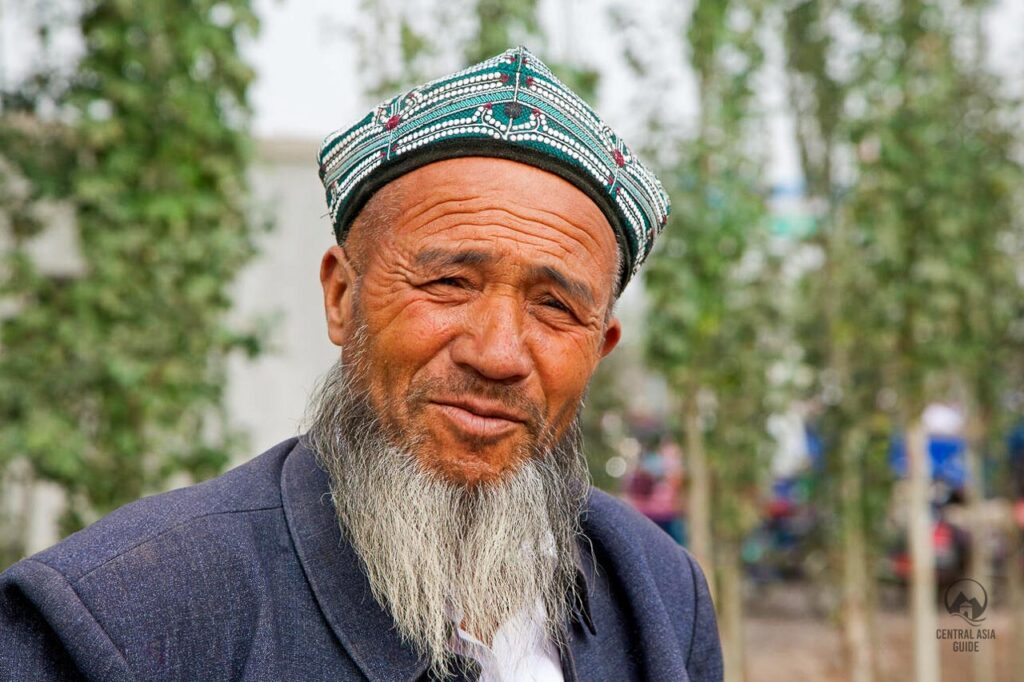
Uighur Language
Uighur language belongs to the Turkic branch of the Altaic language family and is written with a modified Arabic script in China but in other countries they mostly follow the official scripts of the country. The language is closely related to Uzbek and has influences from Persian, Arabic, and Chinese due to historical interactions.
Uighur Cuisine
Uighur cuisine is renowned for its flavorful and diverse dishes, reflecting their Silk Road heritage. Some popular dishes include:
- Laghman: Hand-pulled noodles served with stir-fried vegetables and lamb.
- Kebabs: Grilled meat skewers seasoned with Uighur spices.
- Polu (Pilaf): A rice dish cooked with carrots, onions, and lamb or chicken.
- Naan: A flatbread often served as a staple food.
- Samsa: Baked meat pastries similar to samosas.
Their cuisine often incorporates lamb, beef, and mutton, along with cumin, garlic, and other robust spices.
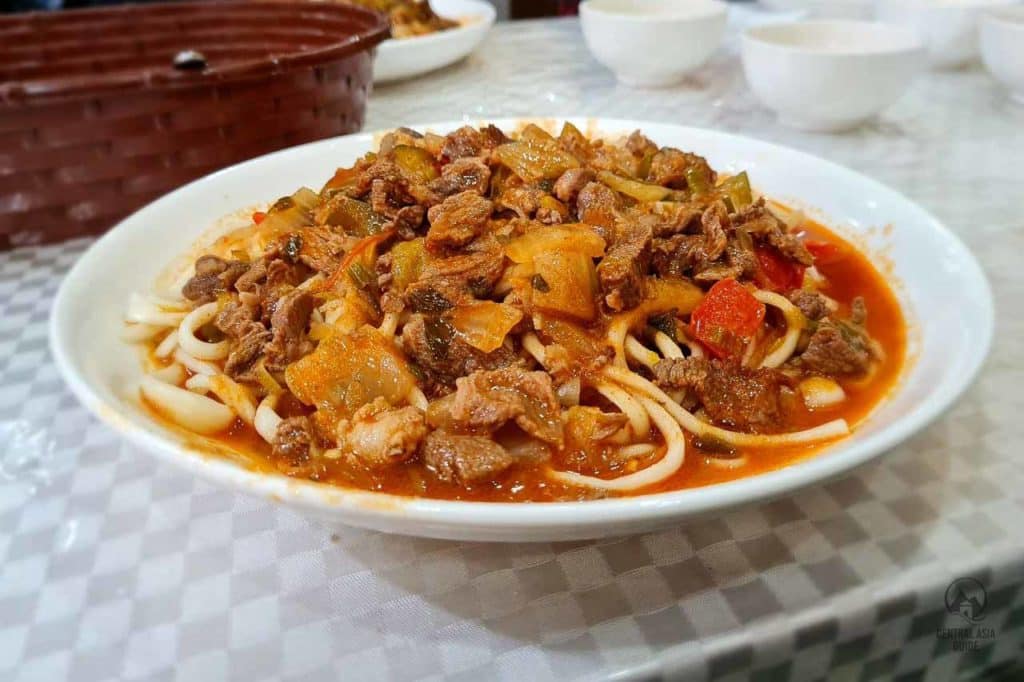
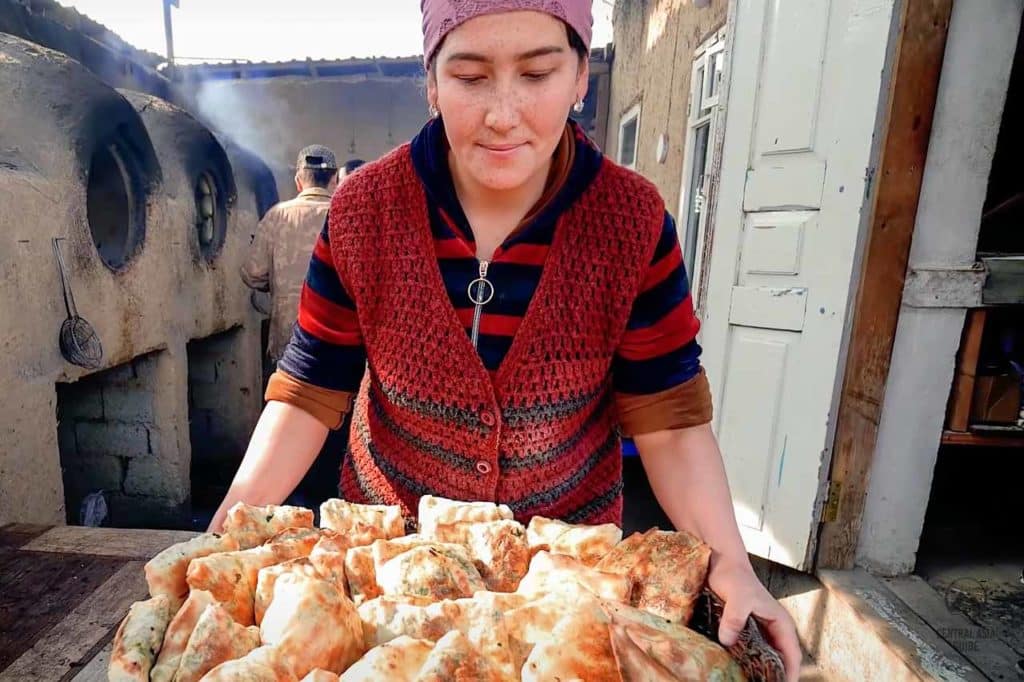
Uighur Literature and folklore
Uighur literature is deeply rooted in oral traditions, with epics, poetry, and proverbs passed down through generations. The tale of Abakh Khoja and Iparhan (the Fragrant Concubine) is a well-known Uighur legend.
Uighur Clothing and Art
Traditional Uighur clothing reflects Central Asian styles, with women wearing colorful, patterned dresses and headscarves, and men donning embroidered caps known as doppa. Uighur arts include intricate embroidery, carpet weaving, and pottery, often featuring geometric and floral motifs.
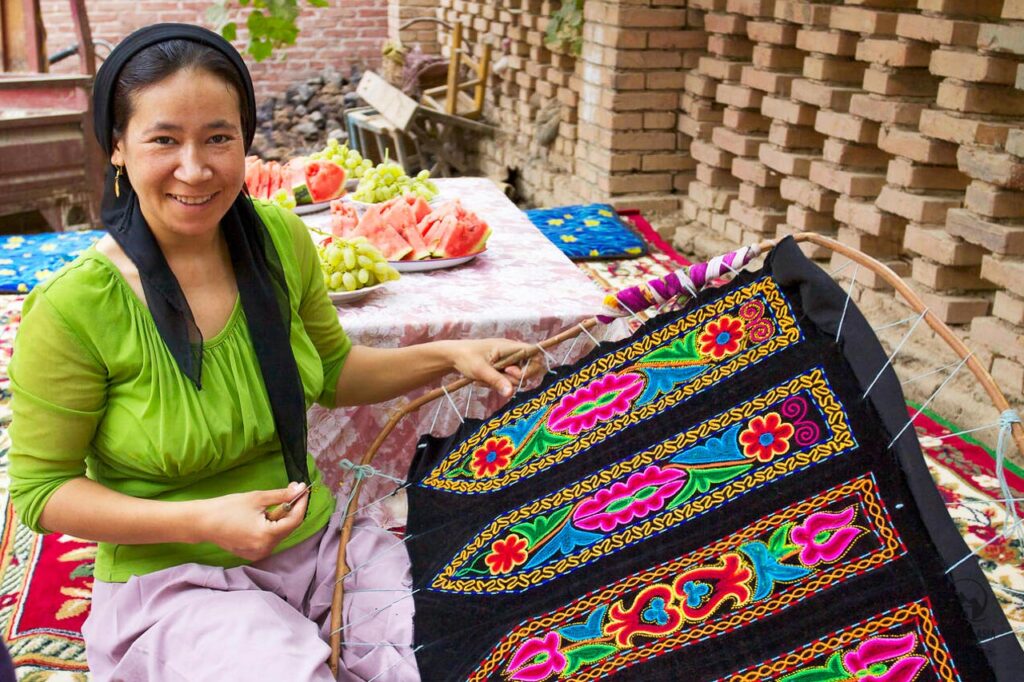
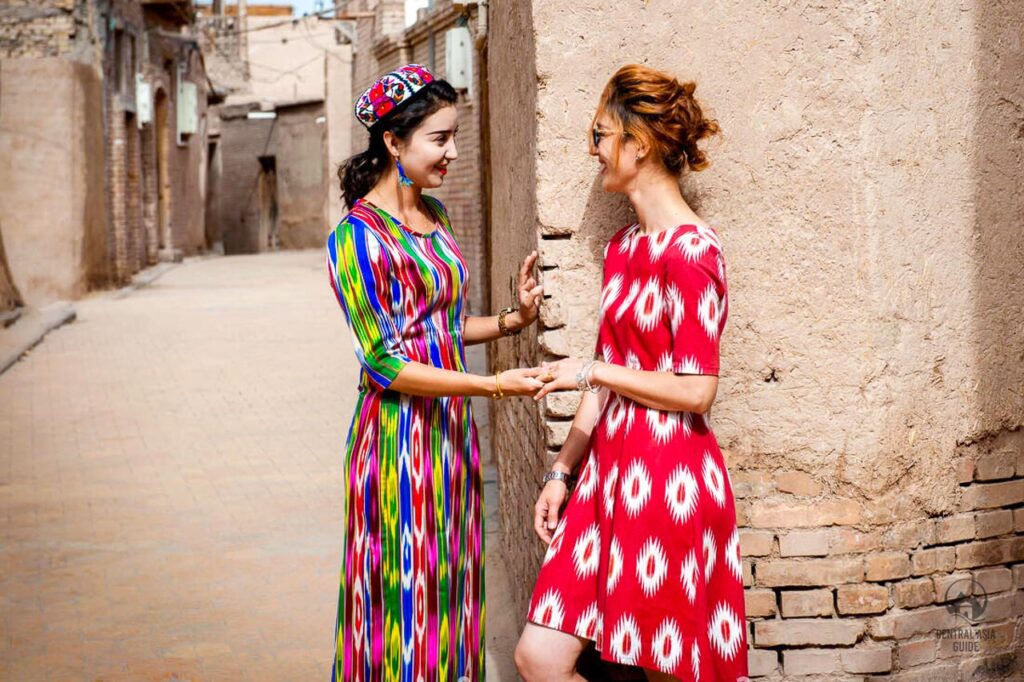
Read more about the Culture of Central Asian Peoples
Page updated 27.11.2024